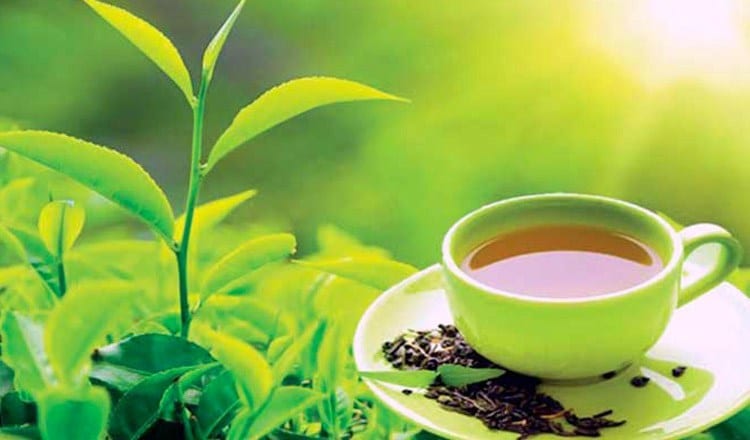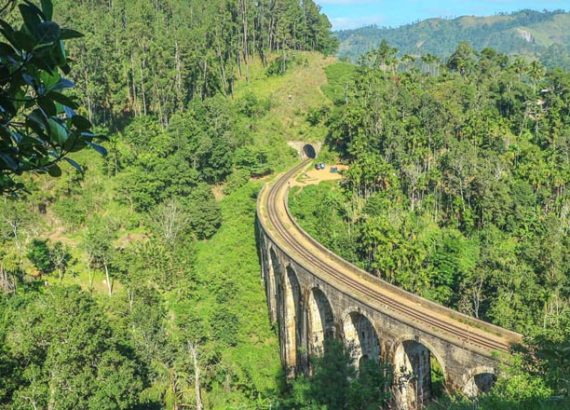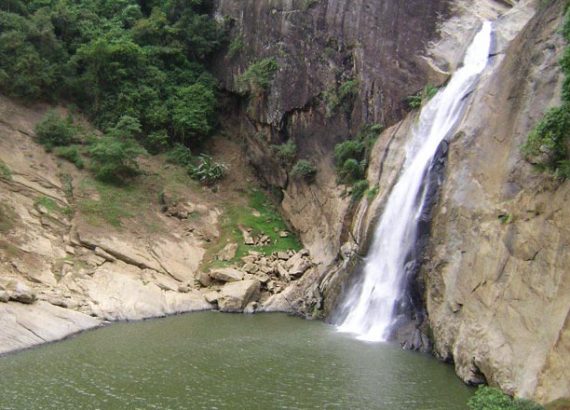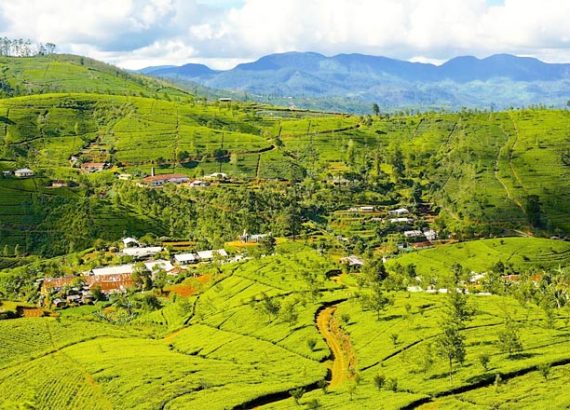The World Famous Ceylon Tea in Sri Lanka

The World Famous Ceylon Tea in Sri Lanka
Sri Lanka is one of the largest exports of tea in the world. Th country produces a wide range of varieties, including grades of the traditional black tea, flavored teas, organic teas and green tea. The first tea plants, brought from china, were grown in Peradeniya Botanical Gardens in 1824, but it wasn’t until 1867 that the first commercial tea plantation was established near Kandy. Before the cultivation of tea began on the island, coffee was the principal plantation crop. However, when the coffee trees were decimated by disease in the 1870’s, tea became a profitable alternative. Today, the tea industry is of great importance to Sri Lanka’s economy. The country’s tea estates attract visitors from around the world and offer tours of tea factories, stays in plantation bungalows and picturesque views of rows of tea bushes. The World Famous Ceylon Tea in Sri Lanka
Tea plantation
About 4 percent of Sri Lanka’s land area is covered with tea plantations. These are mainly found in the Hill Country, which offers the ideal terrain and climate for the plants to flourish. Tea bushes are carefully manicured and kept at waist height for ease of plucking. Tea cutting are kept in a nursery for about a year before being planted in the fields.
The British and Tea
In 1852, a Scottish planter named James Taylor arrived in Sri Lanka to work for a coffee grower. He was put in charge of the Loolecondera estate near Kandy. In 1867, Taylor grew the first tea plants for commercial use in a section of the estate. The plantation’s success eventually led to the expansion of the global tea industry in the late 19th century, with several large British companies buying the smaller estates. The Tea Bush is an evergreen tree, which grows to a height of around 10 m (33ft) in the wild.
Tea Pluckers
Most of the tea pluckers in Sri Lanka are women and the majority are descendants of the Tamil labours who were brought from south India to work in the plantations by the British in the 1870’s. The tea workers are required to pick at least 20 Kg (44lb) of leaves every day. Their wags are low and the living conditions are poor; they often live in barrack-style buildings comprising only one or two rooms.
From Bush to Cup in 24 Hours
Tea production in Sri Lanka is a labour intensive industry. Tea leaves are still plucked by hand, and it is the youngest two leaves as well as the bud that are taken every six to 10 days. After the leaves have been collected, they are delivered to the factory where they are processed using either the traditional or the CTC (crush, tear and curl) method. The end product is then ready to be sent for auction to make its way onto shop shelves. Tea factories offer tours to explain the tea-making process and many of them continue to use machines that have changed little since the 19th century.
Traditional Method
The plucked leaves are dried in huge trays or “withering troughs” while hot air is blown over them to reduce moisture content. They are subsequently crushed, which caused enzymes to be released and the fermentation process to begin. Leaves are left to ferment for a short period after which they are left to ferment for a short period after which they are fired in an oven. They are then left to cool before being sorted and graded.
CTC Method
This method is much faster than the traditional method. Fresh leave are passed through a series of cylindrical rollers that crush, tear and curl the tea. The ground up leaves are then rolled into little pellets and oxi dissed. Tea manufactured by this process is mostly used in tea bags.
Tea Distribution
The majority of tea produced from both traditional and CTC methods is packed into sacks and sent for sale in Colombo, where a variety of grades are auctioned for export and blending purposes.
Grades of Tea
Sri Lanka tea is divided into various grades. While high-grown thrives above 1.200 m (3,937) and is said to have the best color, aroma and flavor, low-grown is founded below 600 m (1,968 ft) and is less flavorful. Medium-grown is cultivated between these two altitudes. Teas are also graded by size and by quality. The finest among leaf teas is Orange Pekoe (OP), which is made with unbroken leaves, and the slightly lesser broken Orange Pekoe (BOP). Fanning’s as well as dust are graded much lower and end up in tea bags. The World Famous Ceylon Tea in Sri Lanka






